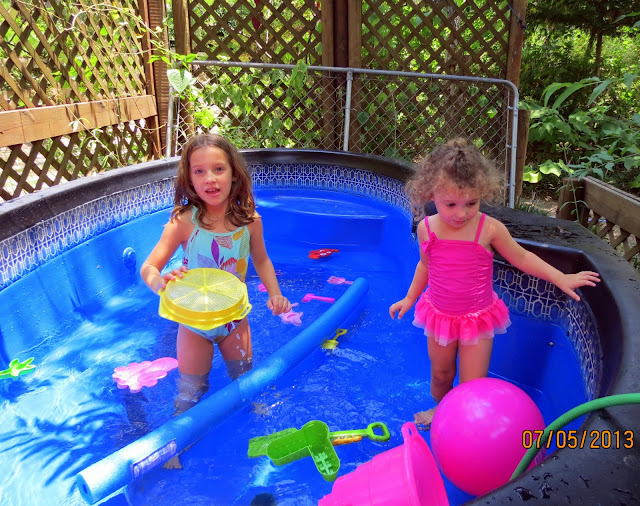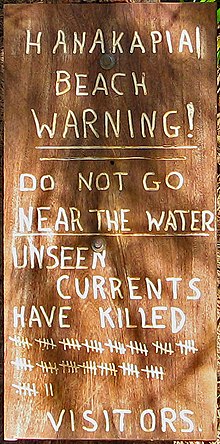This one announces that "We are Rich!
This one is laughing that little one thinks this is "Rich"!
Hi Everybody!!
I hope You all survived the Holiday. We had a great Pool Party Day over here. I have shared the party pics here as there are 3 Blog viewers who want to see them all. I put the others in slideshows so You can view if You like. I know most people would not choose to live in a small cabin in the woods (my kids included), but the Grankids think it is just great! Water is still water if it is in a big fancy pool or a little cold tub in the garden! We got wet and played hard. The only difference is I pay about ten dollars a year on pool maintenance! So, Welcome to the Garden Tub Annual Fourth of July Party! Enjoy!
Here comes the Grandson!
https://en.wikipedia.org/wiki/Human_swimming
Human swimming
From Wikipedia, the free encyclopedia
Human swimming is the self propulsion of a person through water or other liquid, for survival, recreation, sport, exercise or other reason. Locomotion is achieved through coordinated movement of the limbs, the body, or both. Humans are able to hold their breath underwater and undertake rudimentary locomotive swimming within weeks of birth, as an evolutionary response.[1]
Swimming is consistently found to be among the top recreational activities undertaken by the public,[2][3][4][5] and in some countries, swimming lessons are a compulsory part of the educational curriculum. As a formalised sport, swimming features in a range of local, national and international competitions, including featuring in every modern summer Olympics.
Purpose[edit]
There are many reasons why people swim, from swimming as a recreational pursuit to swimming as a necessary part of a job or other activity. Some people may also be forced into swimming involuntarily as a result of falling into water.
Recreation[edit]
The largest reason for people swimming is as a recreation activity, with swimming consistently ranking as one of the physical activities people are most likely to take part in. Recreational swimming can be used for people to exercise, to relax or to rehabilitate.[7] The support of the water, and the reduction in impact, makes swimming accessible for people who are unable to undertake activities such as running.
Health[edit]
Swimming is primarily a cardiovascular/aerobic exercise[8] due to the long exercise time, requiring a constant oxygen supply to the muscles, except for short sprints where the muscles work anaerobically. As with most aerobic exercise, swimming is believed to reduce the harmful effects of stress. Swimming can also improve posture.
Sport[edit]
Main article: Swimming (sport)
Swimming as a sport predominantly involves competition among participants to be the fastest over a given distance under self propulsion. Different distances are swum in different levels of competition. For example, swimming has been part of Olympic Swimming since 1896, and the current program contains events from 50m to 1500m in length, across all four main strokes and medley.
The sport is governed internationally by the Fédération Internationale de Natation (FINA), and competition pools for FINA events are 25 or 50 metres in length. In the United States of America, USA Swimming is the governing body and a pool 25 yards in length is commonly used for competition.
There are other swimming and water related sporting disciplines including diving, synchronised swimming and water polo, as well as sports which include a swimming element, such as triathlon and modern pentathlon.
Risks[edit]
There are many risks associated with voluntary or involuntary human presence in water, which may result in death directly or through drowning asphyxiation. Swimming is both the goal of much voluntary presence, and the prime means of regaining land in accidental situations.
Most recorded water deaths fall into these categories:
- Panic where the inexperienced swimmer or non swimmer becomes mentally overwhelmed by the circumstances of their immersion, leading to sinking and drowning. Occasionally panic can kill through hyperventilation even in very shallow water.
- Exhaustion where the person is unable to sustain efforts to swim or tread water, often leading to death through drowning.
An adult with fully developed and extended lungs has generally positive or at least neutral buoyancy, and can float with modest effort when calm and in still water. A small child has negative buoyancy and will either sink rapidly or have to make a sustained effort to stay near the surface.
- Hypothermia where the person loses critical core temperature, leading to unconsciousness or heart failure.
- Dehydration from prolonged exposure to hypertonic salt water, less frequently salt water aspiration syndrome where inhaled salt water creates foam in the lungs that restricts breathing.
Hypothermia and dehydration also kill directly, without causing drowning, even when the person wears a life vest.
- Blunt trauma in fast moving flood or river water.
Less common are
- Other adverse effects:
- Adverse encounters with aquatic life:
- Stings from sea lice, jellyfish, fish, sea shells, and some species of coral.
- Puncture wounds caused by crabs, lobsters, sea urchins, zebra mussels, stingrays, flying fish, sea birds, and rubbish.
- Hemorrhaging bites from fish, marine mammals, and marine reptiles, occasionally resulting from predation.
- Venomous bites from sea snakes and certain species of octopus.
- Electrocution or mild shock from electric eels and electric rays.
Around any pool area, safety equipment is often considered important[11] and is a zoning requirement for most residential pools in the United States.[12] Supervision by personnel trained in rescue techniques is required at most competitive swimming meets and public pools.
Lessons[edit]
Main article: Swimming lessons
Children generally do not swim independently until 4 years of age.[13]
In Sweden, Denmark, Norway, Estonia and Finland, the curriculum for the fifth grade (fourth grade in Estonia) states that all children should learn how to swim as well as how to handle emergencies near water. Most commonly, children are expected to be able to swim 200 metres (660 ft) – of which at least 50 metres (160 ft) on their back – after first falling into deep water and getting their head under water. Even though about 95 percent of Swedish school children know how to swim, drowning remains the third most common cause of death among children.[14]
In both the Netherlands and Belgium swimming lessons under school time (schoolzwemmen, school swimming) are supported by the government. Most schools provide swimming lessons. There is a long tradition of swimming lessons in the Netherlands and Belgium, the Dutch translation for the breaststroke swimming style is even schoolslag (schoolstroke). The children learn a variant of the breaststroke, which is technically not entirely correct.[citation needed] In France, swimming is a compulsory part of the curriculum for primary schools. Children usually spend one semester per year learning swimming during CE1/CE2/CM1 (2nd, 3rd and 4th grade).
In many places, swimming lessons are provided by local swimming pools, both those run by the local authority and by private leisure companies. Many schools also include swimming lessons into their Physical Education curricula, provided either in the schools' own pool, or in the nearest public pool.
In the UK, the "Top-ups scheme" calls for school children who cannot swim by the age of 11 to receive intensive daily lessons. These children who have not reached Great Britain's National Curriculum standard of swimming 25 metres by the time they leave primary school will be given a half-hour lesson every day for two weeks during term-time.[15]
In Canada and Mexico there has been a call for swimming to be included in the public school curriculum.[16]
In USA there is the Infant Swimming Resource (ISR)[17] initiative that provides lessons for infant children, to cope with emergency situation when they have fallen into water. They are learned how to roll-back-to-float (hold their breath underwater, to roll onto their back, to float unassisted, rest and breathe until help arrives).

A 2-pool party on the Flamingo Beach Shade Deck
The Grandson Arrives!
The Party is Over; time for Goodbye
The Last Goodbye
...this is brendasue signing off from Rainbow Creek. See You next time. Have a great week!
("Hook Em Horns"!)
Made in America
O+O




















































No comments:
Post a Comment
Hi Everybody! Please say hello and follow so I know you are here! Due to the inconsideration of people trying to put commercials on my blog comment area, I have restricted use of anonymous posts. Sorry that some hurt all.
My public email is katescabin@gmail.com No spammers or trolls